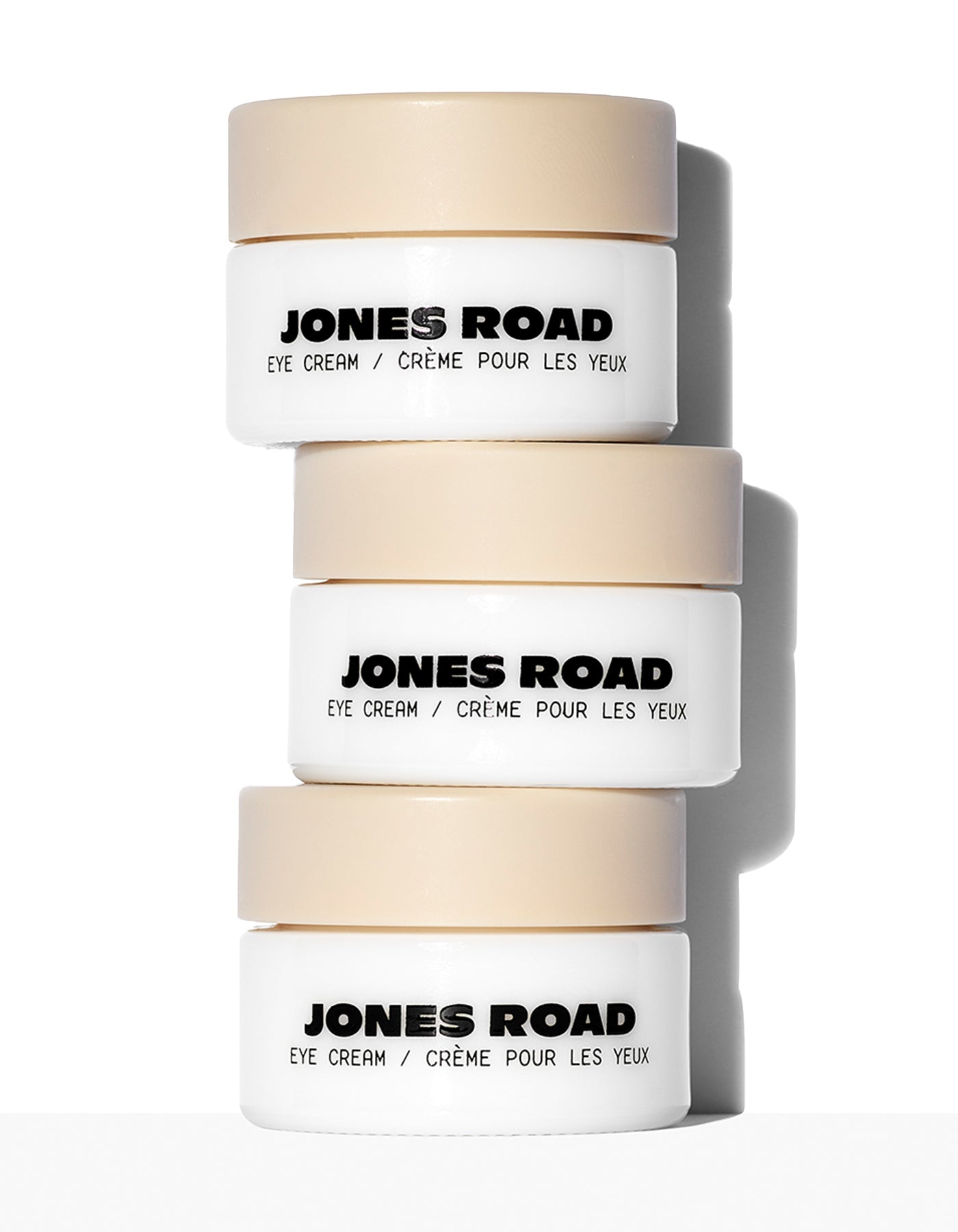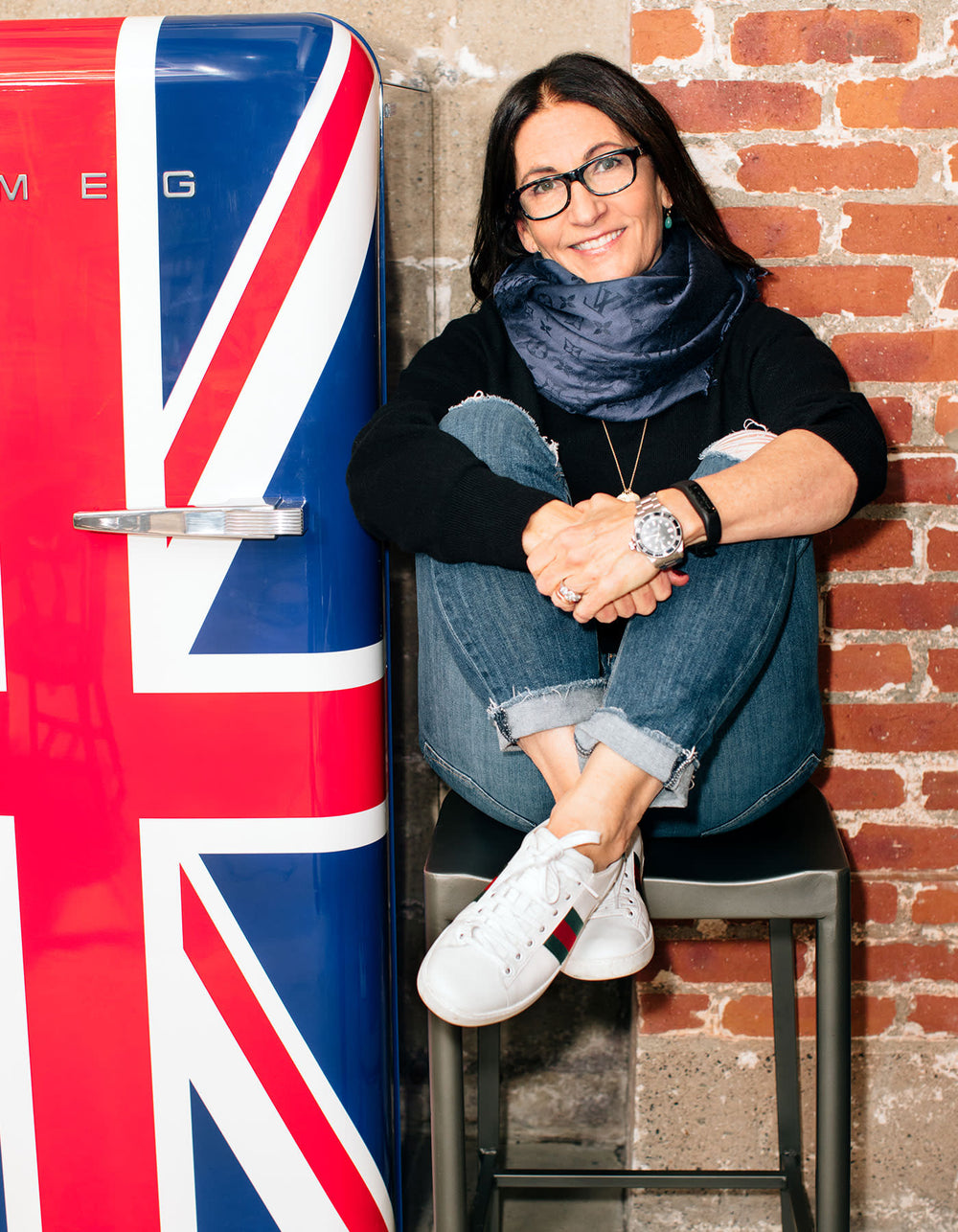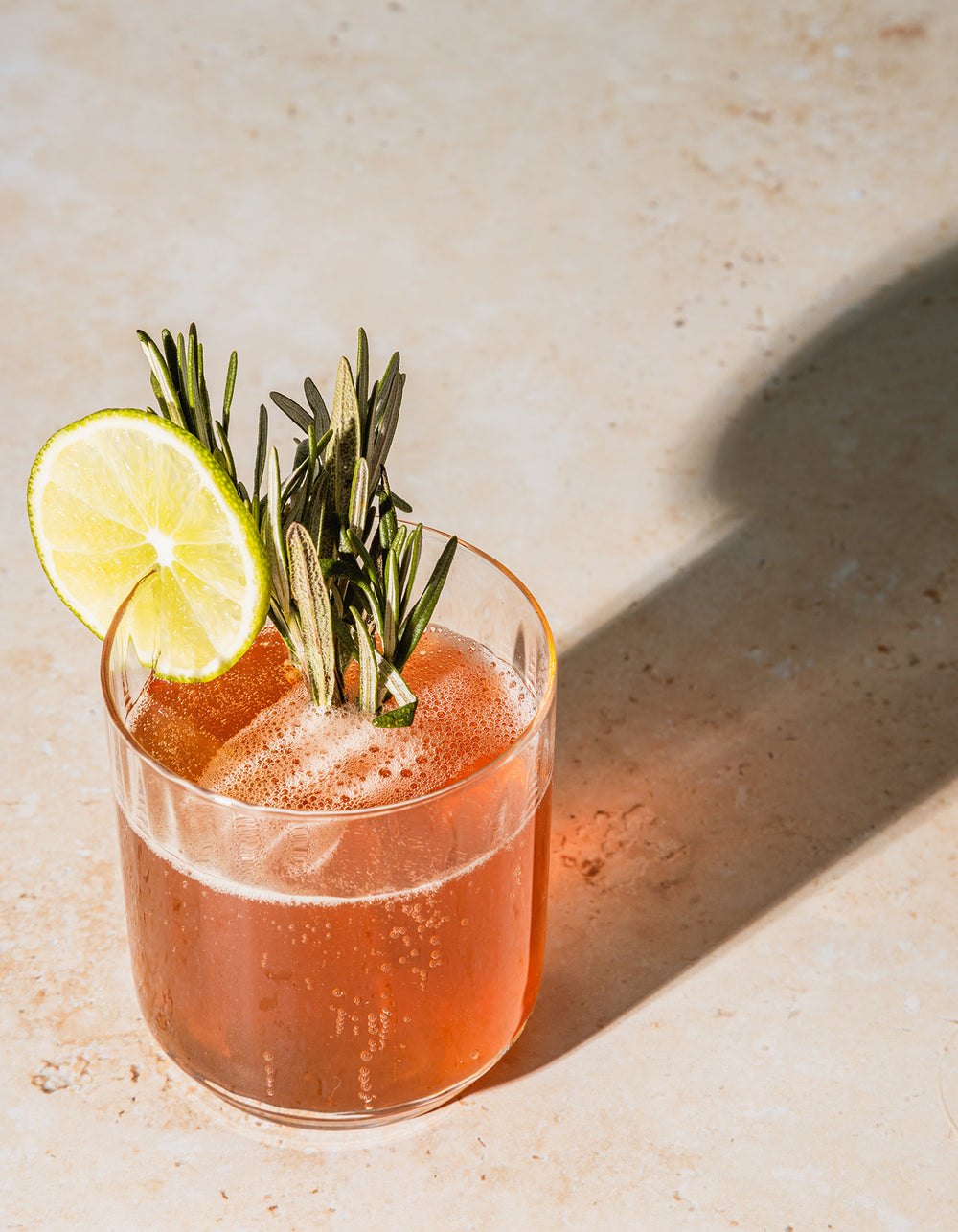Diary / Beauty / Jul 19, 2023
How to Improve the Appearance of Under-Eye Bags
Written by: Piper Gray
Photography by: Ben Ritter & Jon Paterson

You may feel awake and alert after getting a full night’s sleep, but if you have bags under your eyes, your appearance may be telling another story. The puffy, swollen areas beneath your eyes can result from aging, genetics, or other lifestyle factors. No matter the cause, under-eye bags can be frustrating.
Fortunately, this concern can easily be covered with makeup or addressed by making a few modifications to your lifestyle. We’ll explore some reasons for what can cause bags under your eyes and how you can count on Jones Road Beauty products to restore your complexion to a more refreshed appearance.
What Causes Under-Eye Bags?
Aging
No surprise here, aging is a considerable factor in the development of bags under your eyes. As we get older, our skin naturally loses elasticity and firmness, thanks to reduced collagen, which helps your skin snap back into place. This can cause the skin under your eyes to start sagging, resulting in a baggy appearance.
Muscles and connective tissues also weaken over time, becoming less effective at keeping the fat pads around your eyes in place, leading them to protrude and become puffy. When paired with the reduction of collagen production, you can see how aging leads to the formation of under-eye bags.
Genetics
Genetics can cause bags under your eyes, which means that some people are more naturally inclined to experience under-eye bags. This can be due to the natural structure of the orbital socket, cheeks, and the surrounding fat layers.
Lifestyle factors
Getting trapped in the cycle of too-little sleep and less-than-nutritious food will affect how your body functions and will probably affect the appearance of your skin.
A lack of sleep can contribute to bags under your eyes. Poor sleep can disrupt the body’s fluid balance, leading to fluid retention, and when it comes to the delicate skin under your eyes, this translates into puffiness and bagginess.
Collagen production is also affected by poor sleep. This protein is responsible for helping your skin to maintain its elasticity and firmness. Without collagen, the skin under your eyes will appear to sag, leading to the formation of bags under your eyes.
The types of foods you consume can impact the appearance of under-eye bags. Sodium intake can cause your body to hold on to water, resulting in puffiness—especially under the eye area. Packaged foods and fast foods contain high amounts of sodium. Get into the habit of reading labels, and pick lower-sodium options when possible.
Your morning cold brew may help you prepare to tackle the day, and a nice glass of wine helps you relax in the evening. However, you’ll want to watch your intake, as excessive caffeine and alcohol can dehydrate the skin. This also leads to fluid retention.

How Can I Prevent Under-Eye Bags?
The short of it: proactiveness is key. Taking care of yourself and looking at your lifestyle, including your skincare, nutrition, hydration, and sleep habits, can help to significantly reduce the appearance of under-eye bags.
Skincare Routine
A consistent skincare routine will help with many skin concerns, including under-eye bags. You can use home remedies, like cold compresses or green tea bags, on your lower eyelids to assist in reducing the appearance of under-eye bags and eye puffiness . But the best course of action is to keep your face and eye area moisturized.
Our Eye Cream will deliver hydration to your delicate eye area. The skin under your eye will drink up the thick formula, minimizing the appearance of baggy eyes and puffy eyes.
And don’t skimp on the SPF. UV rays can cause damage to the skin, and using high-quality sunscreen can support your skin throughout the aging process. This will also help to minimize the appearance of fine lines, wrinkles, and dark circles under your eyes.
Nutrition and Hydration
Providing your body with the nutrients it needs supports your body as well as your skin.
Foods rich in vitamins C and E support collagen production and skin elasticity so load up on oranges, grapefruit, peppers, spinach, almonds, and avocados. Puffiness and inflammation may also be calmed by omega-3 fatty acids; incorporating more fish and nuts in your diet will help increase your omega-3 fatty acid intake. Limiting salty foods can help to combat puffiness and swelling, and choose foods high in antioxidants to support your overall health and wellness.
Drinking plenty of water hydrates your body inside and out. Eating plenty of fruits and vegetables can also be considered part of your overall daily hydration, but sipping water will ensure your body receives the hydration it needs. You’ll feel good, and your skin will reap the benefits of looking hydrated from within.
Sleep Habits
To minimize the development of bags under your eyes, it’s important to choose healthy sleep habits. While the exact amount may vary from person to person, adults usually need around seven to nine hours of sleep each night.
Establishing a bedtime routine will signal your body that it is time to wind down. Consider building a routine with relaxing steps like making a cup of caffeine-free tea, reading, or taking a warm bath. No scrolling on your phone, though. Screens can disrupt your natural sleep-wake cycle as the blue light screens emit can interfere with our body’s natural circadian rhythms. Put your phone away at least 30 minutes before your bedtime.

How Can I Conceal Under-Eye Bags With Makeup?
Using an effective concealer to cover and minimize the appearance of under-eye bags can give your appearance a vibrant, awake look, even if you don’t feel too energetic.
Choosing the Right Concealer
The right concealer can make all the difference when covering the appearance of under-eye bags. Our Face Pencil helps to correct discoloration and lighten dark circles and is easy to blend in with other makeup.
Pro tip: Apply concealer to your under-eye area before your foundation for a smoother, more even complexion.
We also recommend choosing a shade that either matches your skin tone exactly or is one shade lighter. Our Face Pencil has 25 shades to choose from, so you’ll find your match easily. If you’re at a loss as to where to start, check out this shade-matching quiz to help you find your perfect match.
Additional Makeup Tips for Minimizing Under-Eye Bags
Applying a color corrector in a peachy shade can help neutralize the purplish undertones that under-eye bags can have. We have several peachy shades to choose from, depending on how deep the purple is.
Apply in a V-shape and blend, blend, blend. You can apply your skin-tone-matching shade, as the color-correction shade will help the skin-tone-matching shade conceal more effectively.
Use our Tinted Face Powder to set your concealer and other complexion products. This ultra-lightweight powder will seamlessly blend into your skin without looking like you are wearing makeup at all. Setting your concealer helps to prevent creasing and will encourage the coverage to last longer.
To set, apply the face powder with a fluffy brush, like our Face Powder Brush, and lightly dust the power over the under-eye area. Use a light hand so you’re not applying too much, as you don’t want your under-eye area to appear cakey.
The Bottom Line
You’ve likely experienced how a lack of sleep and poor food choices can affect the appearance of your under-eye area—so you know how distracting under-eye bags can be.
Reducing their appearance is all about prevention, so take the steps to get enough sleep, eat healthy foods, and hydrate. While some may be more prone to experiencing under-eye bags, additional hydration in the form of creams and concealing makeup can help to further reduce bagginess.
By combining beneficial lifestyle changes with effective makeup techniques, you can help address the causes of under-eye bags. Even if you do have a late night, you have all the tools you need in your makeup bag to help get rid of those bags under your eyes.













































 Miracle Balm
Miracle Balm
 Just Enough Tinted Moisturizer
Just Enough Tinted Moisturizer
 What The Foundation
What The Foundation














